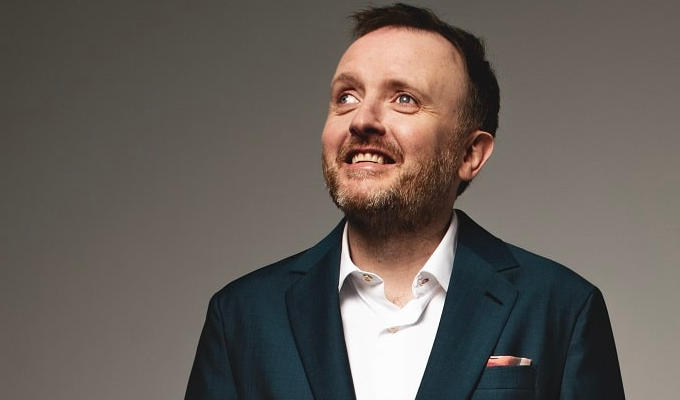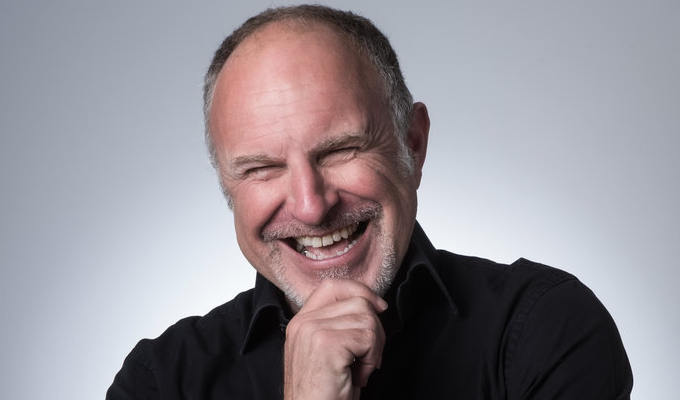The thrill of the new
Dave Cohen on 20 years of new material nights
Here’s an anniversary you won’t be reading about anywhere else. Twenty years ago this month the first ever new material night was launched on London’s comedy circuit.Six stand-ups - Jim Tavare, Mark Thomas, Ivor Dembina, Jim Miller, Hatttie Hayridge and me – put together a run of six shows at The Cleveland Arms, a nuclear-bunker of a pub by the Post Office Tower. We promised to try out five minutes new material every fortnight, and booked an act to do their normal set in the second half.
Most of us had become reliant on our tight 20 minute sets honed over previous years. It was always possible to throw in the odd new gag and work it into the set, but was becoming riskier to chuck in a whole new chunk that could fall completely flat, even if the gig had been going great. As a performer partly reliant on two-minute songs I was especially sensitive to this problem.
I remember the feelings at those gigs, especially the first one. Before going on stage it was both nerve-wracking and exhilarating. We came armed with a few fall-back ad libs – ‘thanks for not laughing, I know now that line doesn’t work’ ‘new doesn’t necessarily mean ‘funny’ and so on.
It was not the most promising start. Despite the central London location there wasn’t much passing pedestrian traffic. The shows were on Thursdays, a dead comedy night back then. The stage was tiny, the room long and thin, or to use a technical phrase, rubbish for stand-up.
I can’t remember how we came together as a group, or what motivated us. Many were graduating to solo Edinburgh shows, and needed more places to try new stuff. There was also the feeling that we wanted a gig where it would be all right to fail. The circuit was becoming more professional, which in most ways was a good thing. What had begun for us as a hobby financed by the DSS, was turning into a proper full-time job. But it felt like we were losing the sense of adventure and excitement that had brought us into performing comedy in the first place. Also there were fewer comedians then, and fewer venues. Everyone knew everyone else’s act inside out. It made a nice change to watch your mates stretching themselves for once.
Audiences were small but appreciative. Almost everyone who came at the beginning turned up again. Then about three shows in Malcolm Hay, the Time Out comedy critic, came along and became an instant fan. Malcolm had always been a champion of any show that tried to be different – also like us he was probably fed up of seeing us all do the same material over and over and over.
By the end of the run, and with Time Out’s help, we’d built up a fair following, so felt confident enough to continue. We expanded the group, and made a whole night of it. Jeff Green, Jo Brand, Patrick Marber, Maria McErlane and Martin Soan were among those who joined, as we moved that autumn to alternate Mondays at the Camden Head in Islington. Having travelled all over Islington, the show is today back at its spiritual home.
Most of us remained committed to the ideal. Any profits were ploughed back into the show, and at the end of one season there was enough money to organise a comedians’ day trip To Margate. Christ, what a weird day out that was.
Like the early Comedy Store improv nights, there were good nights and terrible ones. One of the funniest gags I ever saw, never to be repeated, was performed by Martin Soan, just days after he became a dad. He spent ages before the gig setting up an incredibly elaborate TV and video system, the like of which had not been seen before at a comedy gig. He came on stage and switched on the screen, which showed his tiny daughter lying on a bed. He began explaining everything about the birth – then the baby in the video started crying. He interrupted himself, picked up the TV screen, rocked it gently, and the baby stopped crying. Genius.
We became more ambitious. Some of us performing at the Comedy Store’s topical Cutting Edge show wanted to try material for that, so in 1990 a weekly night began at the Old Red Lion in Soho. This was around the time when Eddie Izzard was developing from a solid act into a comedy superstar. I feel privileged to have seen Eddie so much at that time, coming back every week, stretching himself further every time, storming every night.
The gigs have continued to flourish but haven’t taken off as hugely popular shows. Probably because the quality can be so variable: the sight of comics reading from sheets of paper is not the most conducive to laughter, and most punters are probably more than happy to see their favourite performers at their best, rather than in rehearsal.
Even the now familiar sight of famous comics trying out material for their upcoming national tours has failed to lure punters in their droves. I recently saw Frank Skinner road testing new material. It was fascinating to watch a young comedy audience, delirious with excitement to be so close to a comedy superstar they knew only as that cheeky chappie off the telly - and then to watch their faces as he launched into one of his standard routines graphically describing his sexual exploits with foreign prostitutes in the back of taxi cabs.
But the shows are here to stay, and will remain because the comics need them. As an audience member, you’ll never see the show transfer to telly, and you’ll rarely see a night of non-stop brilliance, but you will witness top comedians performing not for money, or fame, or instant laughter feedback, but simply for the sake of their craft.
Published: 7 Mar 2008






